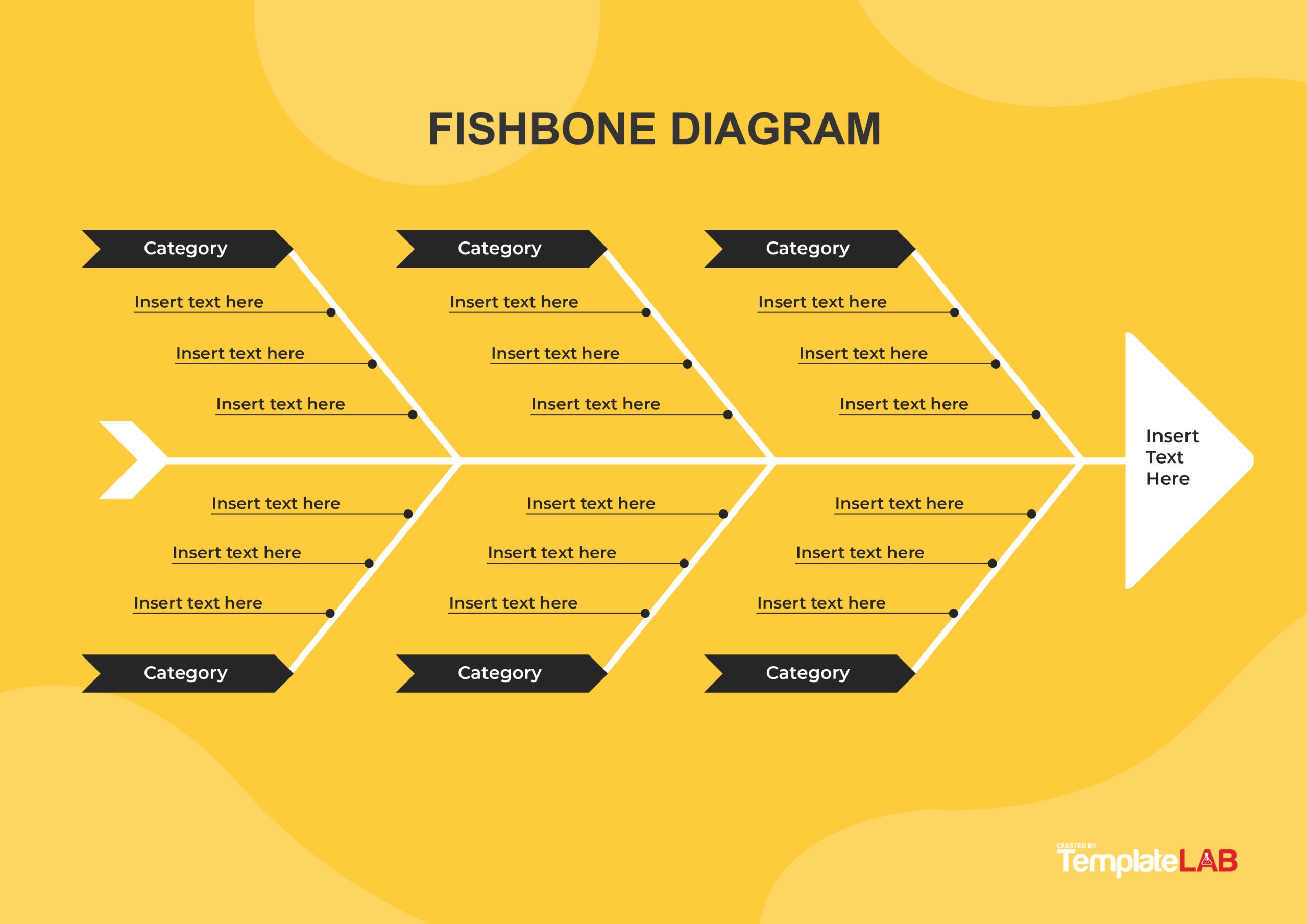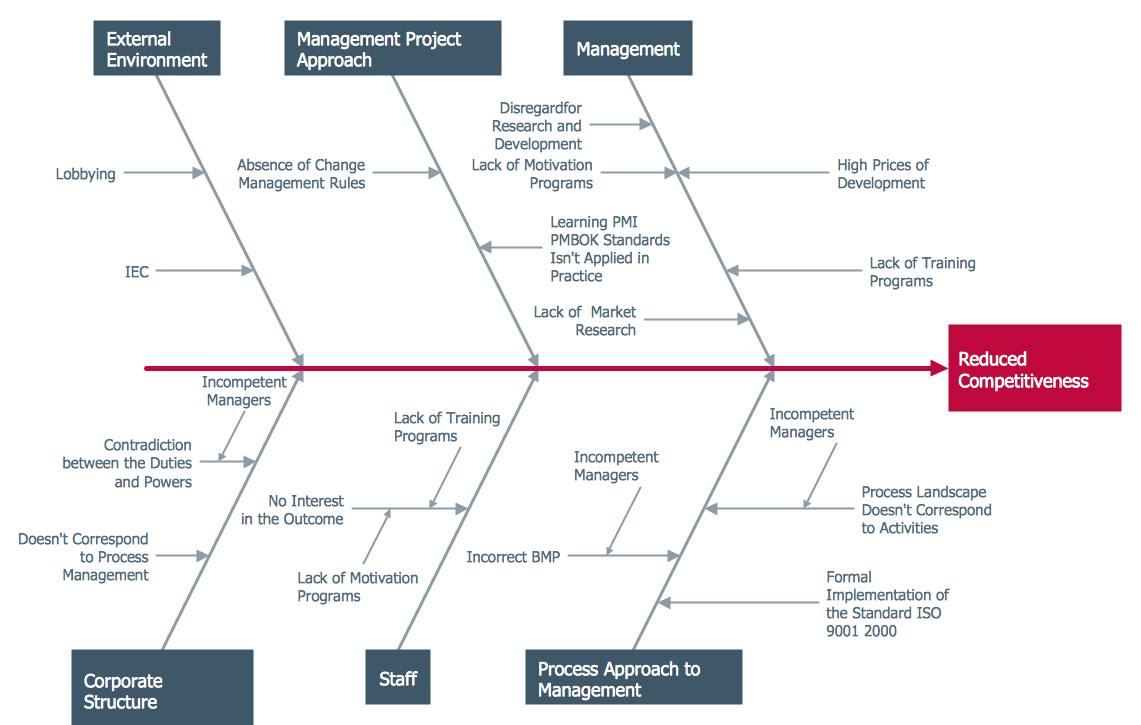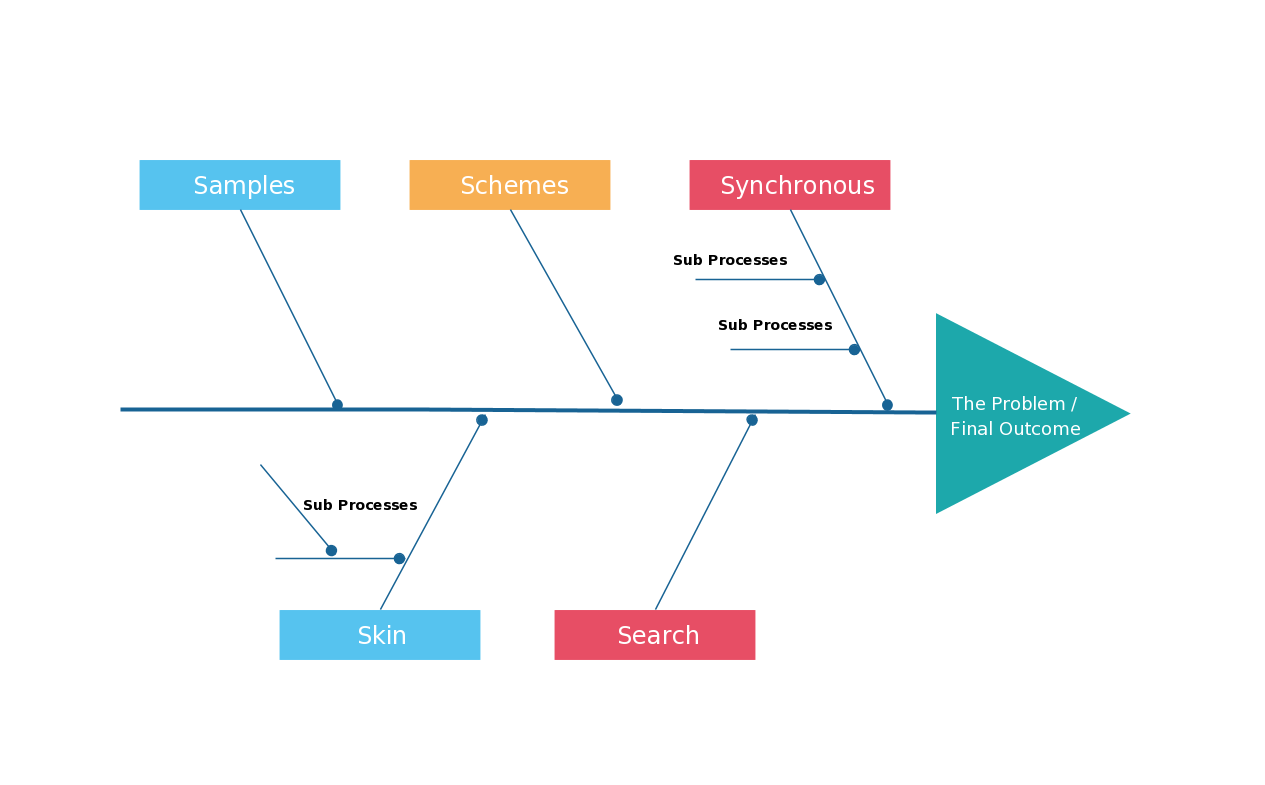

Draw the possible causes as branches from the main horizontal line. Where a cause is too complex, you may break it down into some sub-causes. For each of the categories of factors, you found in step 2, brainstorm possible causes. Often these causes are categorized under: Step2: Consider and brainstorm the major categories of factors involved in the problem. If this is difficult, you can use a standard categorization models such as 5Ms and 1P. Step1: Identify and agree on a problem statement. After that, write the problem statement in a box on the left side of a whiteboard or sheet of paper. Now, draw a horizontal line across the paper starting from the box. There are some important steps you need to follow in order to make your cause and effect chart truly effective: Making a fishbone diagram is not a two-minute process. The fishbone diagram below represents some common reasons for human obesity. Let’s use a fishbone diagram to graph the possible causes:įinally, let’s see an example related to our personal and healthy life.
ISHIKAWA DIAGRAM EXAMPLES SOFTWARE
Here is a fishbone diagram example that might help you resolve the situation:Ī software development company has a too low performance of its new web application product. You have the task to find the main reasons.

Let’s say you are an online marketing specialist working for a company witch experience low website traffic. Now, as we know the basic let’s see some simple and practical examples of cause and effect diagram.

Stimulates in-depth discussion among team members about the problem.Boosts and frameworks brainstorming about the possible reasons.Gives you a bigger picture and better understanding of the problem.Stimulates an in-depth analysis and evaluation because allows you to explore possible causes in details.A great tool for solving complex problems where many factors have to be taken into consideration.Captures the relationships between the potential causes and shows them in the chart.

Displays all the possible causes of a particular problem in a simple, easy to read graphical way.There are many benefits of Ishikawa diagram for cause analysis and problem-solving: To help you clearly break down the relationships between the factors that cause the issue.īenefits and Importance of Fishbone Diagram.To help teams categorize a variety of potential causes of a problem.It is one of the key root cause analysis tools that combines brainstorming with a kind of mind mapping and makes you think about all potential causes of a given problem, rather than just the one or two.īefore seeing some practical fishbone diagram examples, let’s see why Ishikawa diagram is so important and what are the key purposes of it: The main purpose is to find the root cause. Whether you’re a marketing researcher, project manager or a student, understanding and defining problems is a key pain point for you.įishbone diagram is recognized as one of the best graphical methods to understand and solve problems because it takes into consideration all the possible causes.Ī fishbone diagram (also known as a cause and effect diagram, Ishikawa diagram or herringbone diagram) is a visualization technique for categorizing the potential causes of a specific problem. 3 examples of a completed fishbone diagram (with images).Fishbone diagram importance, purpose, and steps.What is cause and effect diagram? Definition and meaning.The best way to explain and understand how does a fishbone diagram work (also known as cause and effect chart or Ishikawa diagram) for problem-solving, is to see some simple and practical fishbone diagram examples.Ĭause and effect diagram is a key tool for root cause analysis that has important uses in almost any business area such as project management, process improvement, marketing, and etc.


 0 kommentar(er)
0 kommentar(er)
